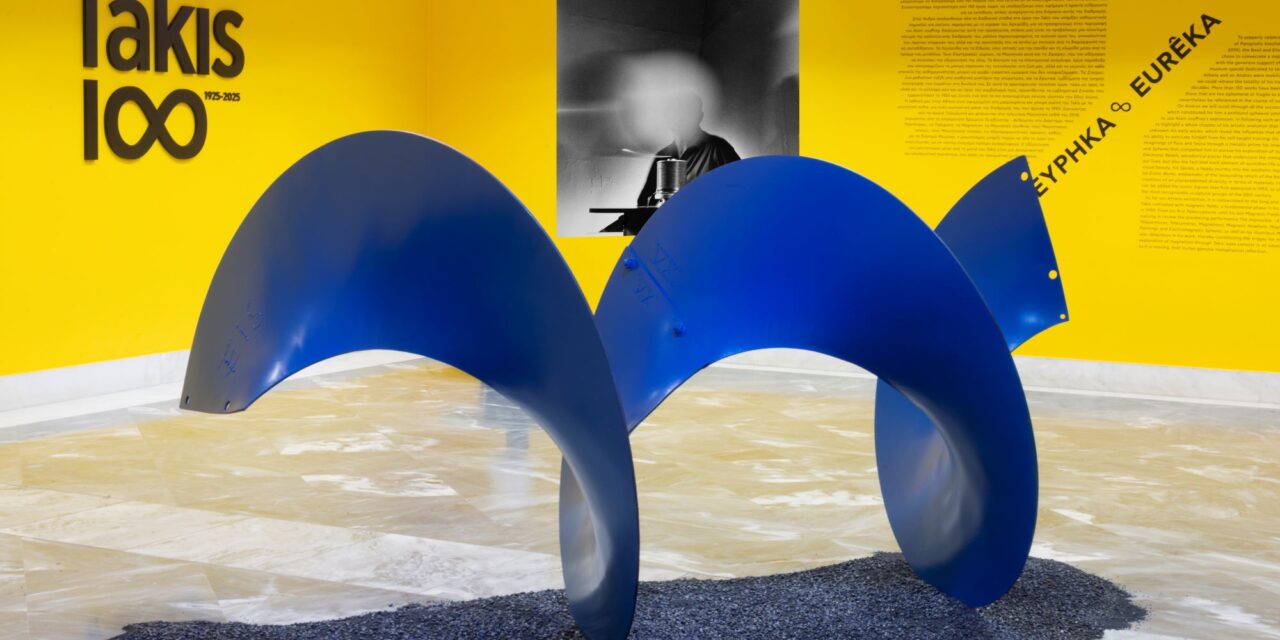Art, Magnetism, and the Infinite: A Tribute to Takis
The Basil & Elise Goulandris Foundation celebrates the centenary of Takis with a landmark Exhibition: TAKIS 1∞. In collaboration with the Takis Foundation, the Basil & Elise Goulandris Foundation presents this major retrospective exhibition to mark the 100th anniversary of the birth of Panayiotis Vassilakis – known as Takis (1925–2019).
Takis was a visionary whose artistic inquiries transcended traditional boundaries. With unrelenting intellectual curiosity, he challenged the limits of sculpture, sound, space, and energy. A true cosmopolitan, Takis approached each new chapter of his artistic evolution with boundless enthusiasm. His work extended far beyond aesthetics, engaging deeply with science, metaphysics, and the invisible forces shaping our world.
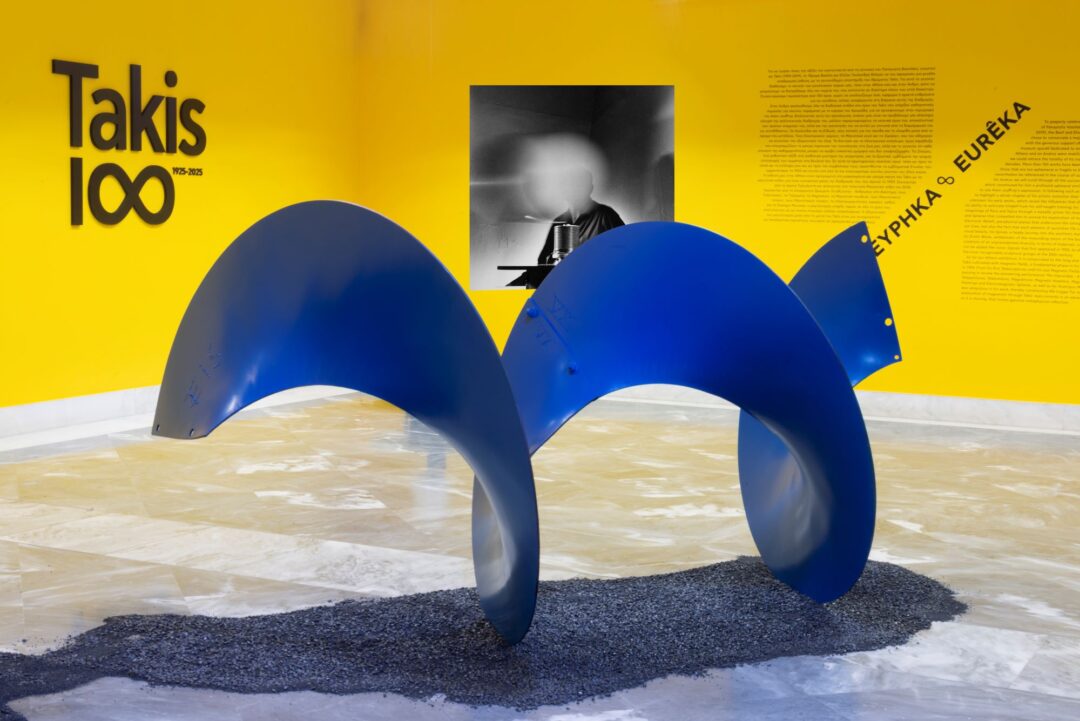
Photo credits © Chris Doulgeris
This unprecedented initiative spans the full arc of Takis’ nearly seventy-year career, assembling over 150 works, from emblematic sculptures and drawings to jewelry, alongside cinematic references and ephemeral pieces, offering a comprehensive view of his groundbreaking legacy. This homage is also deeply personal, reflecting the enduring friendship between Takis and Basil and Elise Goulandris, as well as their shared belief in the transformative power of art. At the same time, it serves as a rare opportunity to celebrate Takis’ profound influence on the international art scene and invites viewers to reconsider Greece’s position within the global cultural avant-garde through the work of a radical, enigmatic and deeply influential figure.
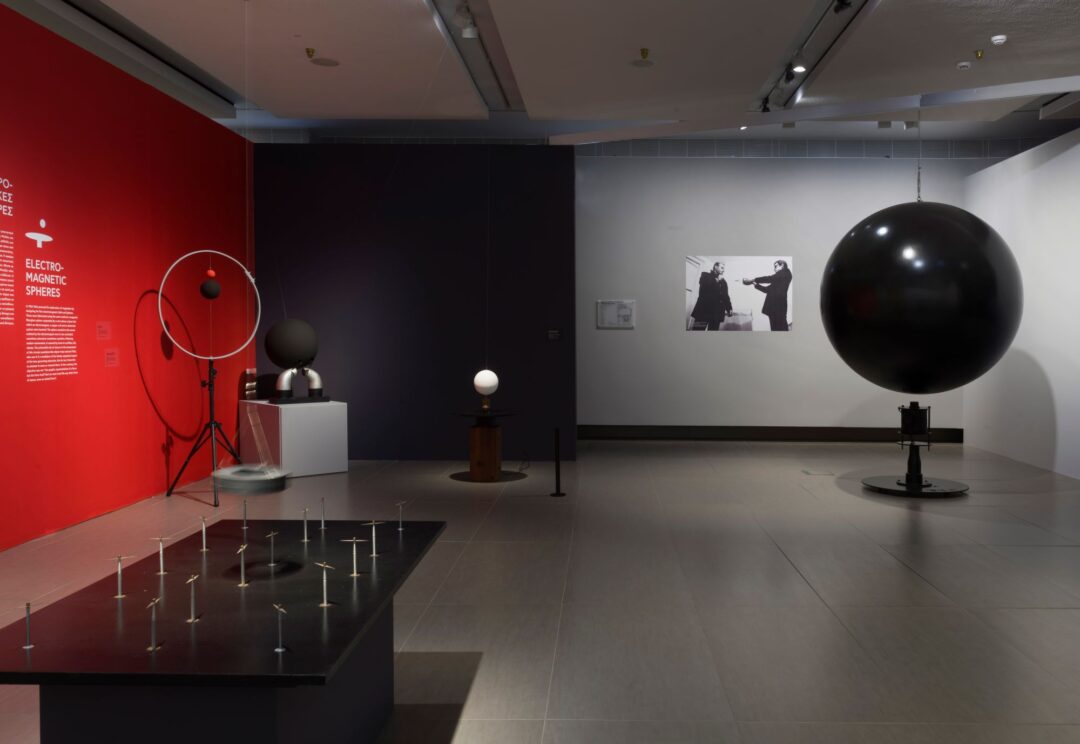
Photo credits © Chris Doulgeris
Alongside the anniversary exhibition, the Basil & Elise Goulandris Foundation is launching its first-ever podcast series: B&E Goulandris Podcasts: an audio dive into the enchanting world of Art. The first edition comprises five episodes dedicated to the life and work of Takis – from his formative years during the Occupation in Greece and his travels to Paris, London, and New York, to his return to Athens and the founding of the Takis Foundation and Research Centre on Gerovouno Hill. Featuring rare audio archives, interviews with curators, and untold stories from those who knew him personally, the series offers an immersive audio experience into Takis’ explosive creative universe.
The exhibition is curated by Marie Koutsomallis-Moreau, Head of Collections at the Basil & Elise Goulandris Foundation and Toby Kamps, Head of the Modernist Collection at the Hamburger Kunsthalle and a specialist in Takis’ work.
Presented simultaneously at both its museums in Athens and Andros, the exhibition runs from June 22 to November 2, 2025.

Photo credits © Chris Doulgeris
The Magnetic Fields
The Magnetic Fields presented at the Basil & Elise Goulandris Foundation in Athens focuses on Takis’ enduring fascination with magnetism, a pivotal element in his work since 1959. From the earliest Télésculptures to the final Magnetic Fields of 2018, the exhibition features key moments in this trajectory: the groundbreaking performance The Impossible – A Man in Space, the Télépeintures, Télélumières, Magnétrons, Magnetic Nowhere, and the emblematicElectromagnetic Spheres and Musical Sculptures.
For Takis, magnetism was more than a scientific phenomenon – it was a metaphysical field of inquiry. He referred to it as the fourth dimension, an invisible yet omnipresent force that animates the world around us. The works on view challenge the viewer to perceive space not as a void, but as a charged and dynamic realm shaped by unseen energies. This journey through magnetic phenomena, as envisioned by Takis, becomes an enchanting and thought-provoking experience – one that invites metaphysical reflection. For Takis, everything is magnetism.
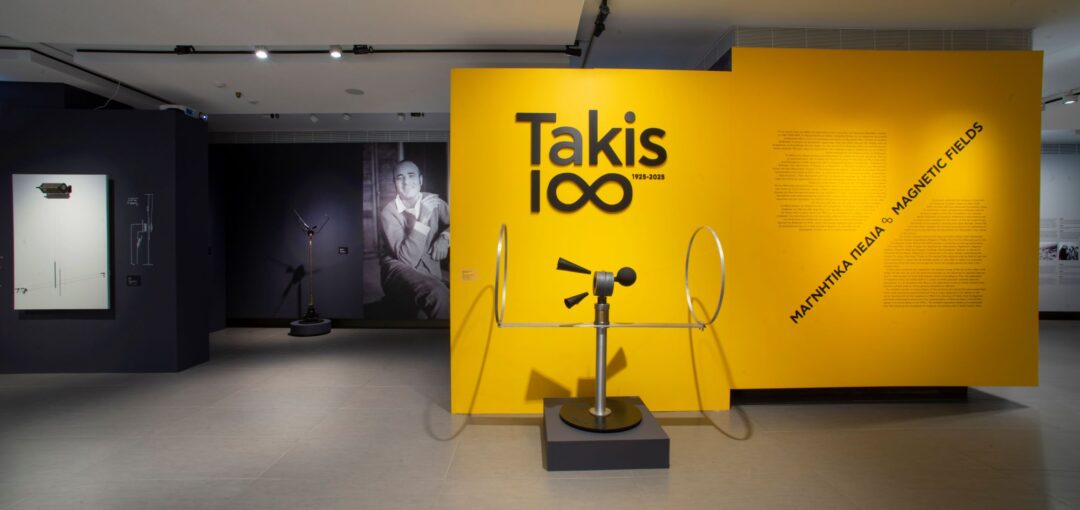
Signals, Forces and Forms
At the Museum of Contemporary Art in Andros, the exhibition focuses on the foundational moments and lesser-known facets of Takis’ practice. Particular attention is paid to his early output, shaped by his self-taught training and influenced by both ancient Greek forms and the postwar European avant-garde. These formative years laid the groundwork for his later innovations.
The Andros exhibition brings together his Flowers and Idols, re-imaginings of flora and fauna through a metallic prism; his Inner Spaces, Magnetic Voids and Spheres that compelled him to pursue his exploration of materials; his Dials and Electronic Reliefs, paradoxical pieces that underscore the omnipresence of technology in our lives, but also the fact that each element of daily life can hide some unsuspected visual beauty; his Spirals, an intoxicating journey into the aesthetic mysteries of geometry; and his lesser known Erotic Works, indicative of the powerful return of the body in his work. These works, so diverse in terms of materials, conception and symbolism, further feature the iconic Signals that first appeared in 1955, to ultimately become one of the most recognizable sculptural groups of the 20th century. These works testify to the remarkable diversity of Takis’ materials, ideas, and symbolic language, underscoring his pioneering status.

Basil & Elise Goulandris Foundation Collection
© Takis Foundation – Research Center for the Art and the Sciences / ADAGP, Paris / OSDEETE, Athens 2025 Photo credits © Chris Doulgeris
Who was Takis?
Takis (born Panayiotis Vassilakis) was one of the most groundbreaking and visionary Greek artists of the 20th century. Known for his pioneering work in kinetic art, Takis used the principles of science, technology, and spirituality to create sculptures that moved, interacted, and responded to the unseen forces of the universe.
He was born in Athens in 1925. His childhood and adolescence were marked by the German and Italian occupation and the Civil War. The financial prosperity of his family had been hit already since 1922, during the Asia Minor disaster. He grew up in a time of great political and cultural upheaval in Greece.
He moved to Paris in the 1950s, where he immersed himself in the avant-garde art scene. His exposure to science and technology, particularly after World War II, that would steer his path in a more experimental direction.
His sculptures weren’t static; they were designed to move or be affected by external forces. This was a radical departure from traditional sculpture. He was most famous for his magnetic sculptures, using magnets to make metal objects appear to float or shift. This created a sense of wonder and illusion in his works. For example, his Magnetic Fields and Signals series used magnetic forces to produce unexpected movements, which blurred the line between art and science.
Takis was profoundly interested in space, both in the physical sense and as a conceptual idea. His work was concerned with not just creating sculptures that occupied physical space, but also sculptures that redefined or questioned the very concept of space.
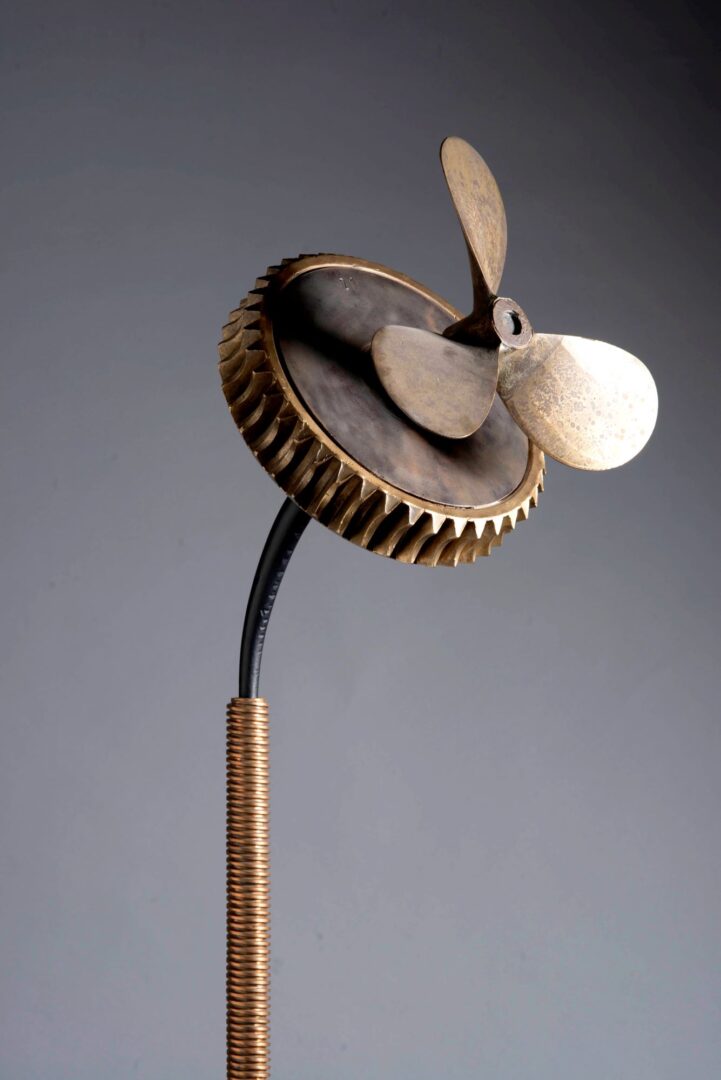
Takis Foundation Collection
© Takis Foundation – Research Center for the Art and the Sciences / ADAGP, Paris / OSDEETE, Athens 2025 Photo credits © Chris Doulgeris
Takis’s works were interactive. Whether they were activated by wind, light, or sound, his sculptures responded to their surroundings, making the viewer part of the experience. This was a radical departure from the more static sculptures of the time. Signals were a key example of this interaction. These sculptures resembled antennas or towers and often emitted sounds, adding another layer of engagement. They symbolized his interest in how energy and forces shape our environment. Takis was deeply fascinated by science and technology and his works reflected the mystery of the universe. His background in sculpture combined with his love for exploring technological advances allowed him to blend art with the scientific principles of the time, such as magnetism and radio waves.
Beyond the kinetic aspect, Takis’ work often invited the viewer to become a part of the sculpture’s process. The way his sculptures react to environmental elements like wind, magnetic fields, or even the viewer’s movements, reinforces the idea that art is a dynamic, interactive process.
His influences ranged from ancient Greek sculpture to Giacometti, up to the technological objects and constructions of the modern era. His works adorn the permanent collections of the most important museums of the world, such as the George Pompidou Centre for Contemporary Art in Paris, the MOMA and the Guggenheim Museum in New York, the De Menil Collection in Houston, the Tate Modern in London, the Peggy Guggenheim Collection in Venice.
He became a prominent figure in the international avant-garde movement and inspired generations of artists working with technology, kinetic sculpture, and sound art. His works remain influential today, especially in the exploration of how art can integrate new media and scientific principles.
A self-taught sculptor, inventor, and explorer of energy and form, Takis defied artistic convention by fusing art, science, and metaphysics. Takis redefined the role of energy in art and remains a key figure in postwar avant-garde movements. His kinetic sculptures turned magnetism, movement, and sound into art and reshaped the way we think about energy, space, and the unseen.
Dora Trogadi
TAGS: ARTS

